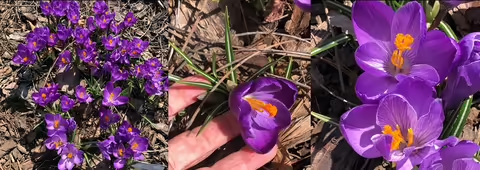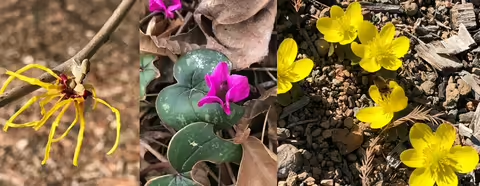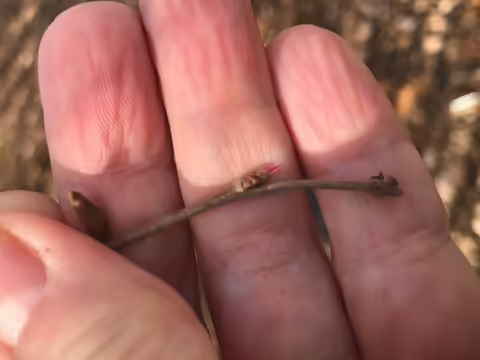My pink dawn viburnum (Viburnum x bodnantense ‘Dawn’) took a hit this past February when low temperatures dropped to minus zero for several days, just as it was budding out. I thought for sure all the blooms were toast, but upon inspection, I see some surviving petals still making a show. That isn’t to say the reproductive components of the surviving flowers weren’t damaged, so time will tell whether berries are in the making for this year…but at the very least there won’t be as many.
I am really enjoying other surviving late winter bloomers like crocus (Crocus sp.), winter aconite (Eranthus sp.), witch hazel (Hamamelis sp.), snowdrops (Galanthus sp.) and hardy cyclamen Clyclamen sp.). And on these warm late-winter days, several pollinators are enjoying the bounty they provide as well. Winter aconite does best in a well-drained soil under a deciduous shrub or tree where they will receive plenty of sun during bloom, but acquire shade as increasing temperatures push them into dormancy. Hardy cyclamen are tolerant of our growing conditions as long as they are planted on well-drained soil and maintained somewhat dry when dormant. And like winter aconite, they do well under a deciduous shrub or tree where they receive full sun when in bloom, but shade later on. Unlike winter aconite and hardy cyclamen whose short statures hug the ground, witch hazels can grow into rather large shrubs, anywhere from 9-12 feet in both height and spread. And regardless of what species or hybrid, they bloom when most other plants don’t, either in the late fall like the common witch hazel (H. virginiana), or in the late winter like the Ozark witch hazel (H. vernalis) and the Chinese witch hazel (H. mollis).
And probably the most unnoticeable winter flower is the “adorable” female catkin of the American hazelnut (Corylus americana). Multiple female flowers bloom together from a small, single swollen bud that is surrounded by protective bracts, and it is only the red stigmata of the flowers exerted beyond the bracts that are visible to a determined and well-sighted observer. Paul Marcum of the Illinois Natural History Survey likened it to the Muppets characters Beaker or Pepe the King Prawn. I can see both, but am leaning more towards Pepe.



